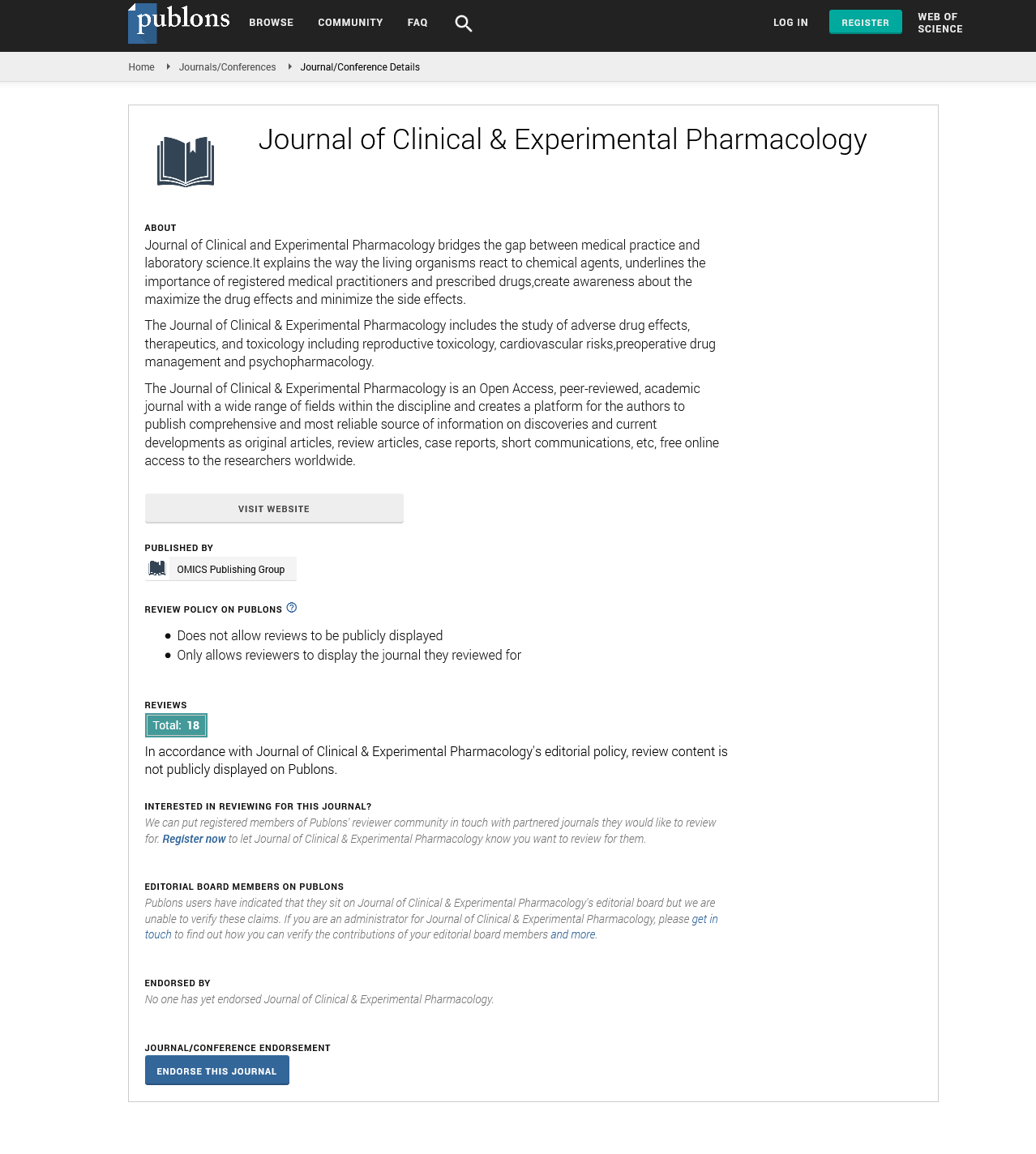Indexed In
- Open J Gate
- Genamics JournalSeek
- China National Knowledge Infrastructure (CNKI)
- Ulrich's Periodicals Directory
- RefSeek
- Hamdard University
- EBSCO A-Z
- OCLC- WorldCat
- Publons
- Google Scholar
Useful Links
Share This Page
Journal Flyer

Open Access Journals
- Agri and Aquaculture
- Biochemistry
- Bioinformatics & Systems Biology
- Business & Management
- Chemistry
- Clinical Sciences
- Engineering
- Food & Nutrition
- General Science
- Genetics & Molecular Biology
- Immunology & Microbiology
- Medical Sciences
- Neuroscience & Psychology
- Nursing & Health Care
- Pharmaceutical Sciences
Quantitative determination of bacoside A by HPTLC in Bacopa monnieri collected from three different geographical sources in India
5th International Conference and Exhibition on Pharmacology and Ethnopharmacology
March 23-25, 2017 Orlando, USA
Kattamanchi Gnananath, Kalakonda Sri Nataraj and Battu Ganga Rao
Shri Vishnu College of Pharmacy, India
Posters & Accepted Abstracts: Clin Exp Pharmacol
Abstract:
Aim: Bacopa monnieri (Family: Scrophulariaceae) is a widely grown medicinal herb, habitat all over India especially in wet, damp and marshy areas. Since antiquity it is used in folklore Indian medicine, the Ayurveda, as remedy for anxiety and in enhancement of intellect and memory. A simple sensitive HPTLC method was employed for the determination of bacoside A in the Bacopa monnieri collected from three geographical regions at the same month. Methods: Bacoside A standard curve was plotted by applying different concentrations. The estimation of bacoside A was achieved on precoated TLC plate using solvent system the stationary phase was precoated silica gel GF254. The mobile phase used was Ethyl acetate: methanol: water: butanol (8:1.25:0.8:0.25). The plate was scanned and quantified at 525 nm for bacoside A. The method was validated as per ICH guidelines the parameters like linearity, accuracy and specificity were determined. Results: Calibration curve of bacoside A was generated, and the method was validated in terms of precision, repeatability, LOD and LOQ. The relationship between the concentration of standard solutions and the peak response was linear within the concentration range of 160â??480 ng. The instrumental precision and repeatability were 0.46 and 1.10 (%CV), respectively. The TLC densitometric method was precise with %CV for intra-day in the range of 0.46â??1.30 and for interday in the range of 0.83â??1.23. This indicates that the proposed method was precise and reproducible. The LOD and LOQ values for bacoside A were found to be 40 ng and 120 ng, respectively. The content of bacoside A was found to be 0.052±0.002% w/w, 0.285±0.015 and traces respectively in three different regions in B. monnieri aerial parts. Conclusion: The present study was carried out on single phyto markers; hence, further estimation of total saponin content is required for judging the phytochemical variation.
Biography :
Email: K.gnananath@gmail.com

